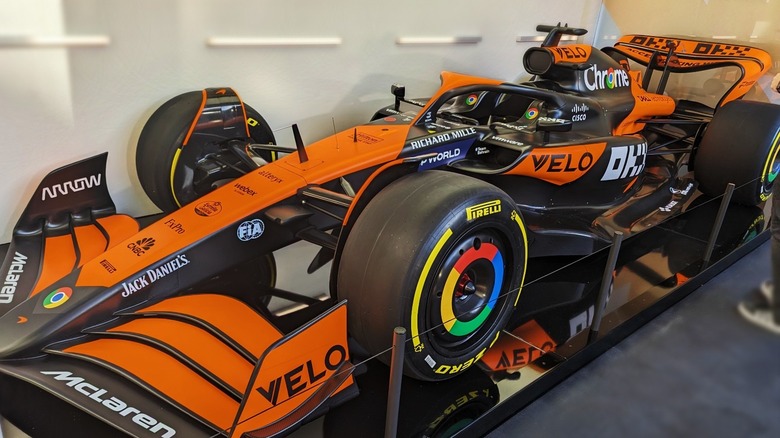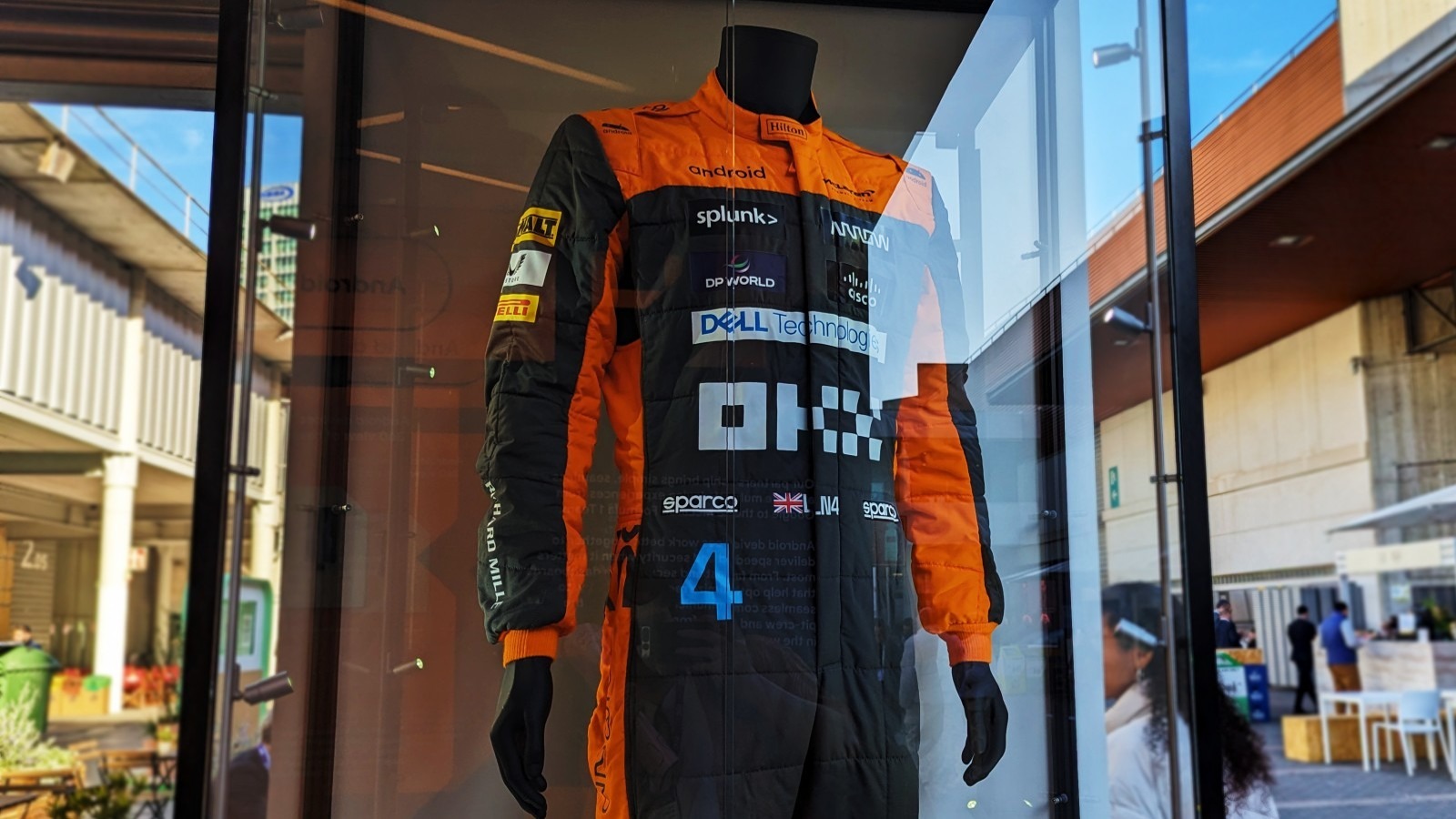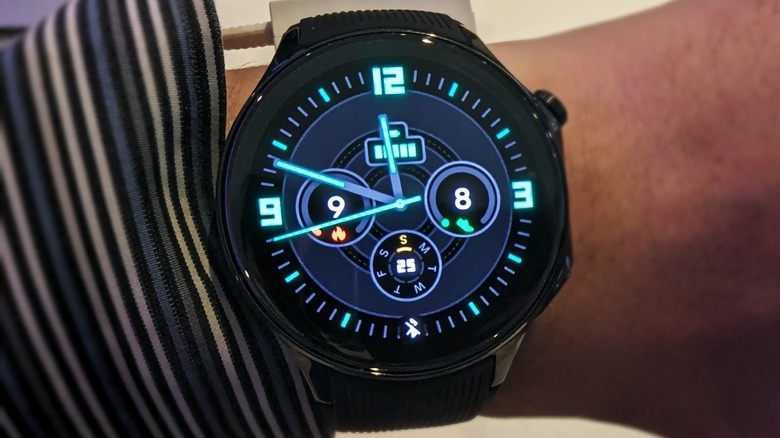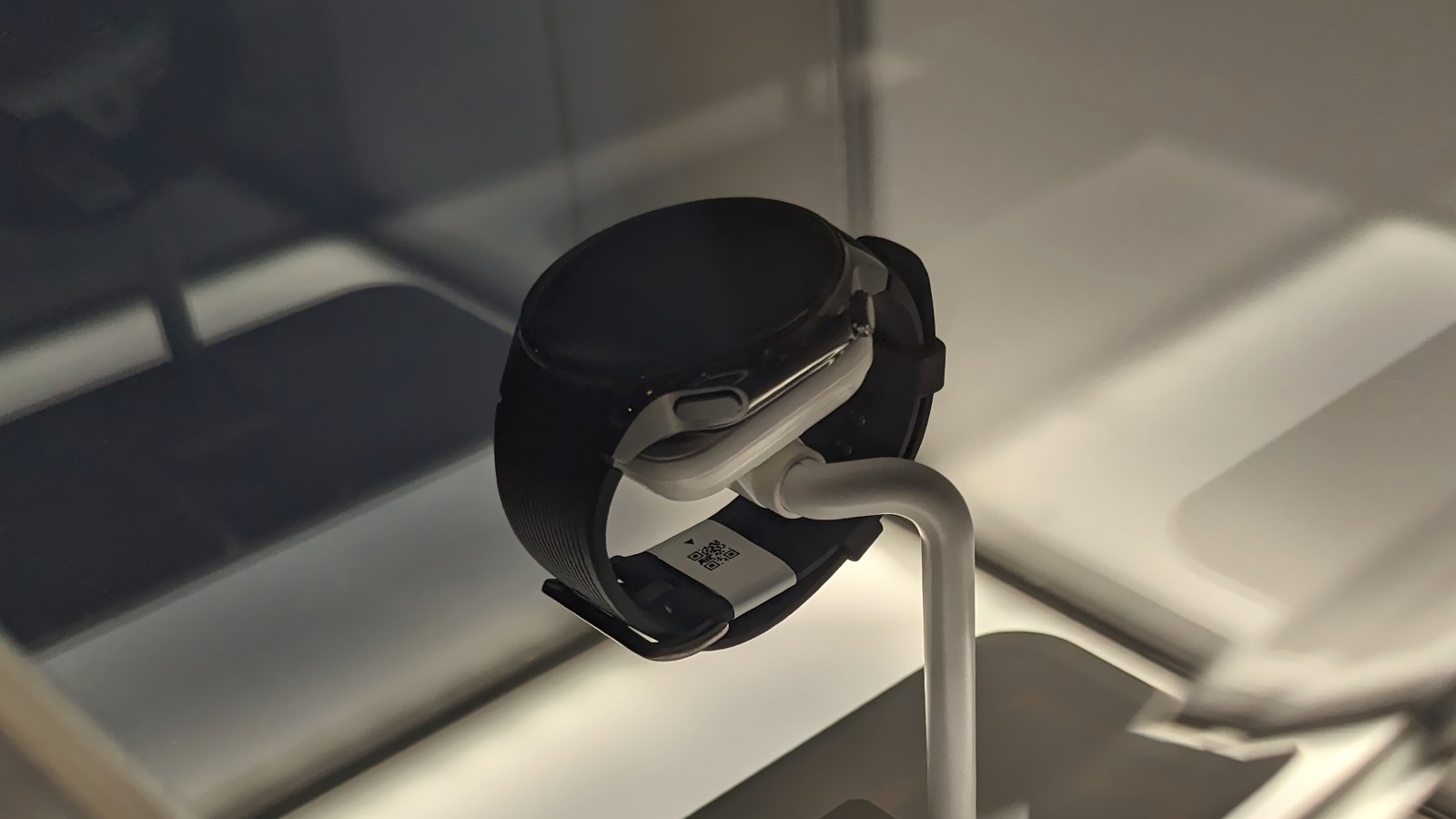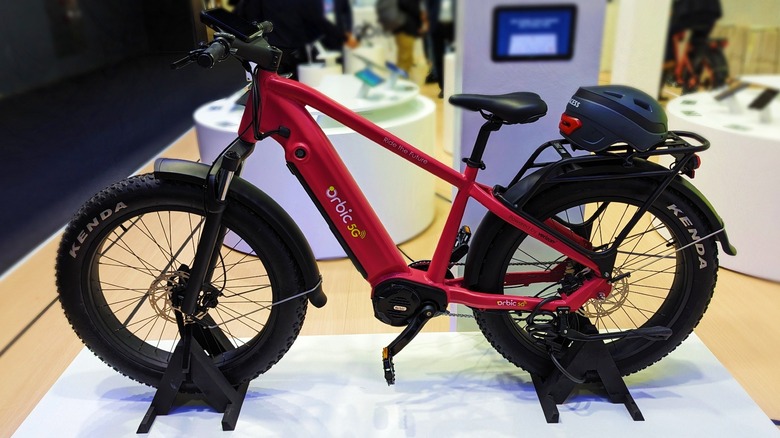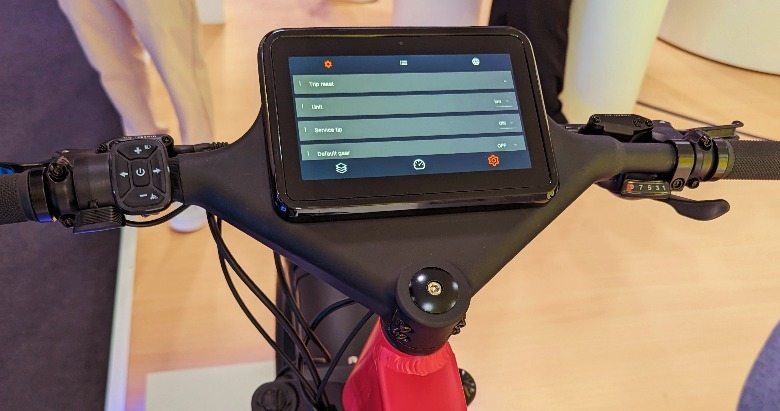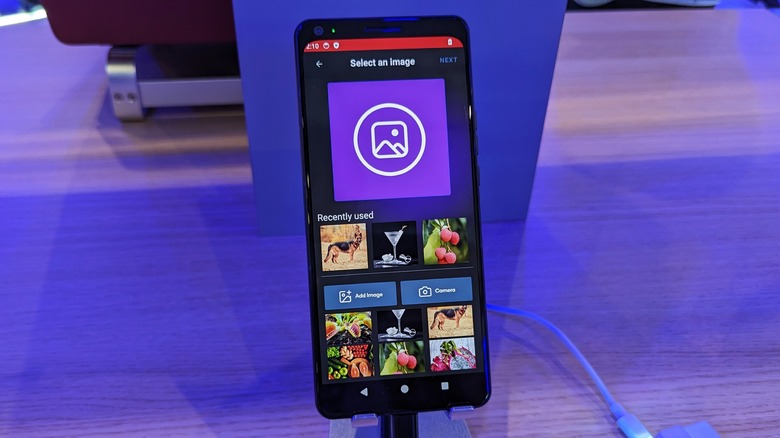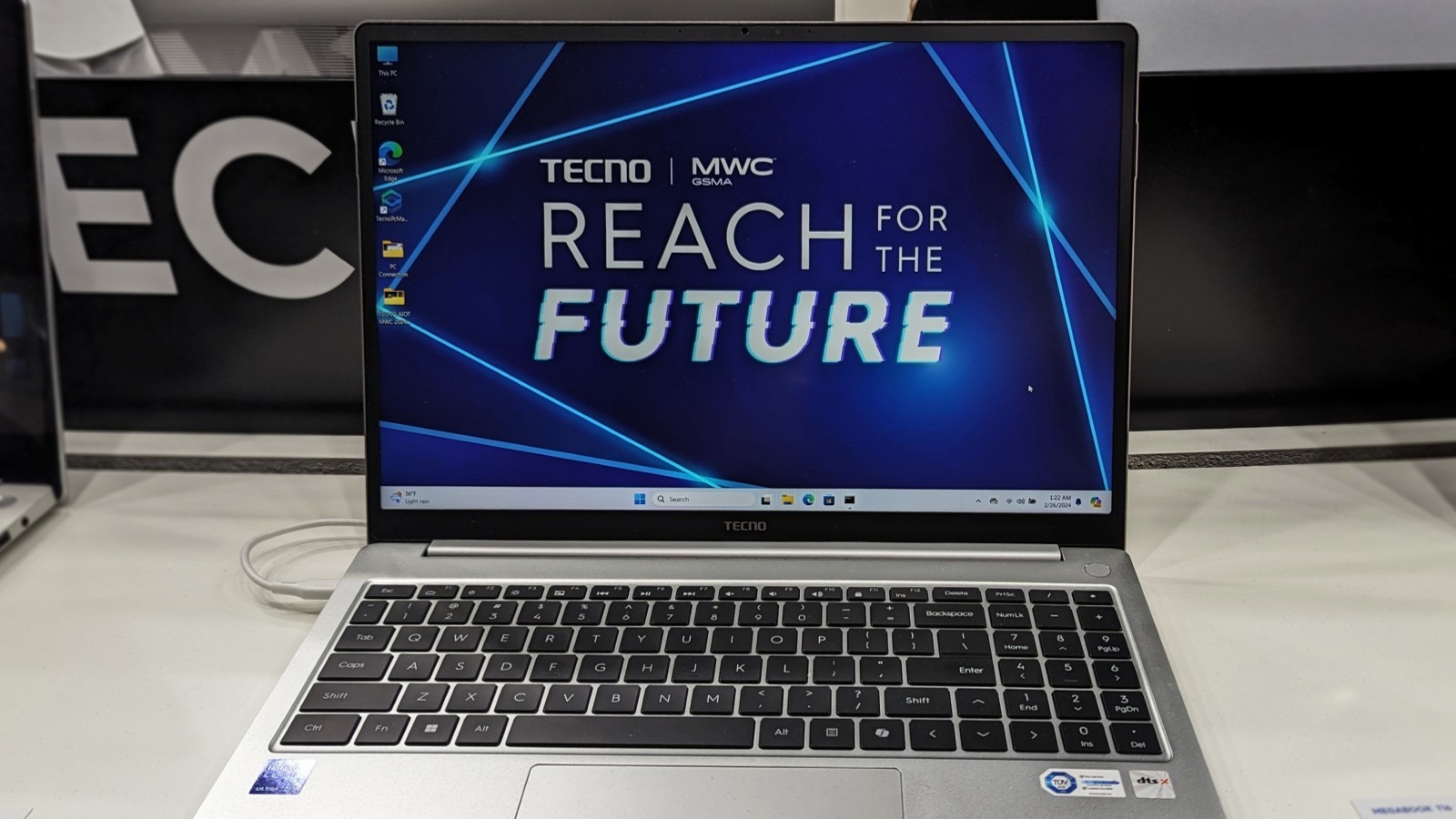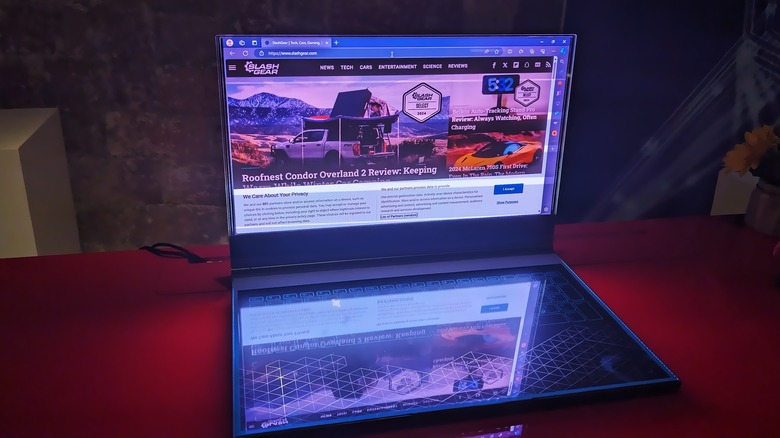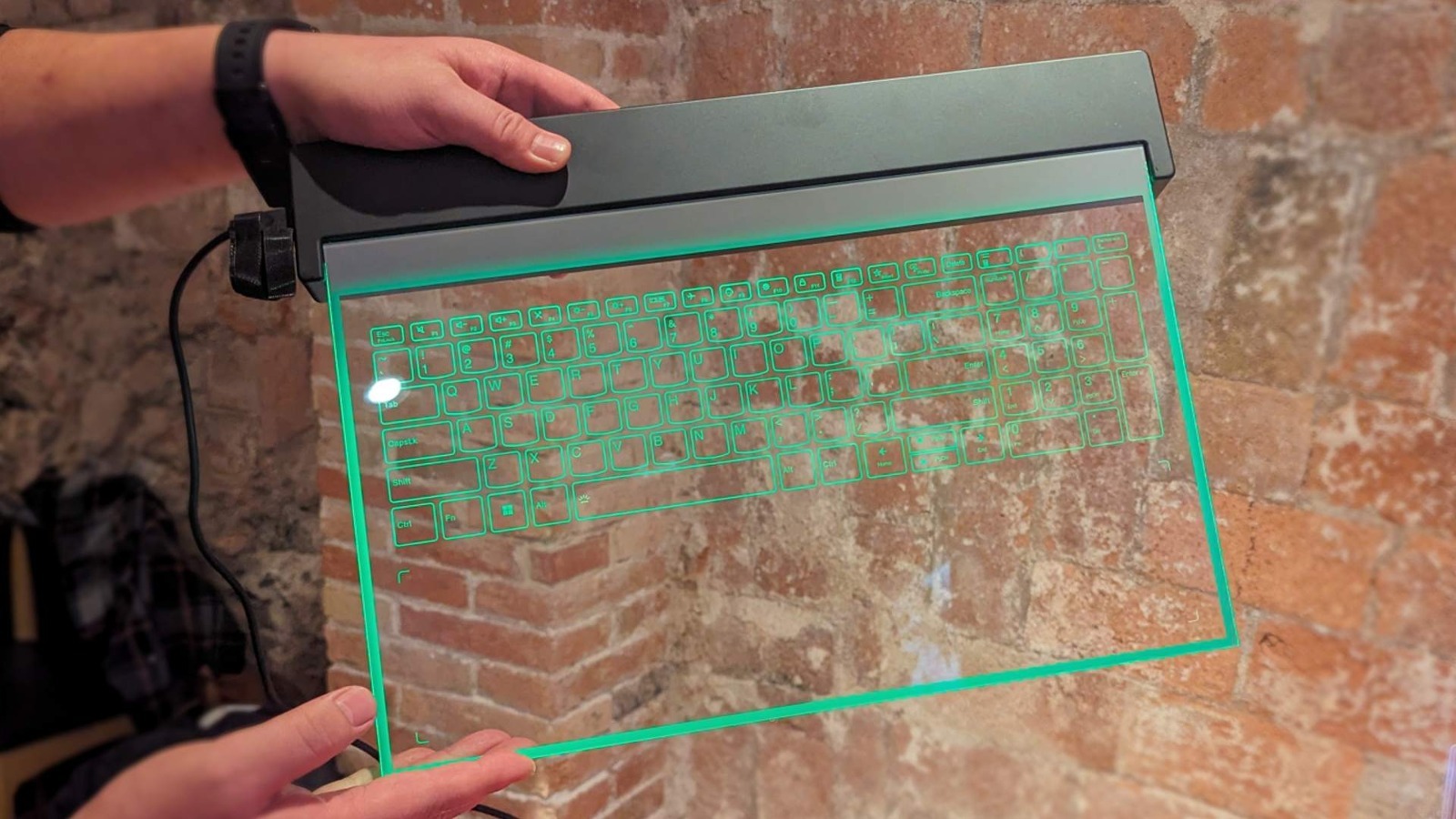Best Moments Of MWC 2024 Day 1: AI, Clear Laptops, And Record Pit Stops
It's the first official day of MWC 2024, and though the show floor has many interesting distractions, we've dug in to sample a plethora of the best tech on offer. As with CES, AI is a hot topic at this year's event, with many companies integrating it into their devices. The actual definition of AI is up for debate, but you'll see everything from virtual baristas to robotic artists after a short wander around the conference.
If AI worries you somewhat, MWC is also providing a few tools you can use to survive it. There's an ebike with built-in 5G, as well as a watch with long battery life and a health-centric focus. We've also talked to a Formula 1 team that uses accessible tech to break records. Well beyond most practical uses, and perhaps reality itself, is a truly unique laptop concept that we got a look at and would really like to see permeate consumer technology at some point. We're in for a long and exciting week, but here's the best crop of products from the show floor on day one.
Android can speed up a tire change
One of our first stops at MWC was Google's Android Alley, where McLaren operates one of the more prominent booths. There, we discussed exactly how much the storied F1 team has integrated Android devices into its day-to-day operations and how that led to a world-record pit stop. F1, which has changed considerably over past decades, is a world of fine margins and restricted budgets, so widely available and highly adaptable consumer tech can play a major role in shaving vital milliseconds off a lap time. The process started with the deployment of Android phones but has escalated to the point where Google's tech is changing how drivers have conversations with their race managers, and how other teams interpret said conversations.
It's not all taken from one of the world's most affluent sports, either. There's a good chance the demands of high-level racing will once again trickle down into everyday life. KERS gave us increased range in EVs and hybrids, the hybrid powertrain itself is arguably an F1 hand-me-down, and carbon fiber wouldn't clad high-end vehicles if its lightweight properties weren't first exploited by top-end racing. So Google may well capitalize on its racing partnerships and somehow shave valuable seconds from your daily commute, too.
OnePlus unveils a practical smartwatch
Smartwatches don't exactly need a popularity boost: a fair chunk of the population already wears one of the multi-use devices on a daily basis. Despite its popularity, the product category as a whole is still developing a following. One of the things that can hold a smartwatch back is the amount of power it can store — even industry leaders like the Apple Watch can tap out in less than a day. OnePlus has tackled this problem head-on with its OnePlus Watch 2. In certain modes, you can expect up to 100 hours of battery life, according to the company.
As an added bonus, those power-saving modes don't take away from the watch's core features. You can still track things like your steps, sleep, and overall health while maximizing the amount of battery you get. There's also a touch of specialization, including several sport-specific modes that aim to improve your badminton game, among other things.
The 5G ebike
Tech brand Orbic is launching the world's first ebike featuring 5G connectivity and a built-in tablet to boot. The bike also comes with numerous safety features, including several cameras and indicator lights. There are some restrictions, though, such as the included helmet being mandatory when riding the device around town. Coming from someone who has reviewed an ebike or two in the past, Orbic's effort ticks a lot of boxes.
Yes, the safety aspect is nice, but touches like a throttle, fat tires, and functional suspension set it apart from several competitors on the market. Couple that with the fact it may save your smartphone from a nasty spill, and Orbic has a solid selling point. A price has yet to be set, but we're told that accessibility is a major consideration when it comes to how much Orbic charges, so don't be shocked if it ends up within your budget.
Local AI is a major theme
ChatGPT leads the AI field in many ways, but the fact you need to be online to use the service is a major drawback. If you want a net-free LLM or an AI image generator that works sans the internet, a couple of companies have you covered. First up is Qualcomm, which has chips in most Android phones. The company has introduced a number of self-contained AI offerings this time round. If images are your biggest concern, then there's a Stable Diffusion-based program that should meet most of your image-generating needs along with a self-contained LLM capable of responding to most requests and spitting out hedgehog-based poems on demand.
Meanwhile, Tecno is shipping laptops with an AI-image generator built in, though it's pretty hit-and-miss in our experience. A carefully crafted prompt can indeed result in a wonderful image, but throw a curveball like "Hulk Hogan surfing on a lake of chocolate mousse" and you'll get a large blonde chap smashing up a cake. On the higher end of things, Gigabyte has launched a supercomputer capable of running fairly complex AIs on its own power. This isn't for me and you, though — it's a business-to-business product with a price stretching well into the six-figures range.
Lenovo's clear laptop concept
Concept products are a strange thing: they can blow your mind or make you question why they exist. Either way, there's going to be a deep-seated part of your soul that really wants to own the odd product on offer. Lenovo's clear laptop ticks every box in this category. It does have niche uses, mind. The example Lenovo showcased involved an engineer positioning it over a river and then sketching in the bridge they want to build. You could also theoretically use it to design a mural or any other kind of art project. It can function as headset-free AI should you need it to, as well.
Whether all of this is enough to justify an actual launch is up for debate — and, as you may suspect, there are flaws for consumers interested in the device to consider. You don't really get "blacks" in an image, you get transparency, so viewing things in high quality is out of the question. The keyboard is a touchscreen affair, so typing long pieces on it is basically out of the question. Still, there's enough there to generate interest and even if the full product doesn't end up on general sale, elements of it will likely crop up on Lenovo's devices as the years go on.
